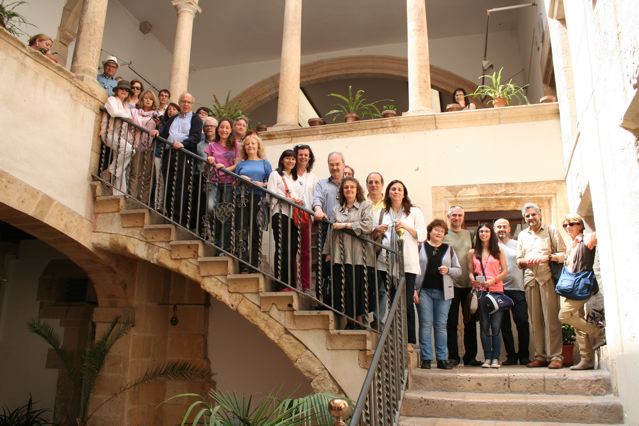French people love spreading their literature and civilization. That is a good thing. The most interesting lessons of the summer course I attended about twenty-five years ago at Alliance Française of Paris were those linking the city’s scenery with writers. They were taught, just before lunchtime, by a messy-haired and bearded professor that would speak while sitting on a bench’s back in the first row of the class and who, from the very first day, suggested we could serenely eat our sandwiches during his lectures about Patrick Modiano’s novels about dark garages, and that would also point on a precarious map –of course, no powerpoint back then!-, the cafes of Saint Germain-des-Prés where Jean Paul Sartre and Simone de Beauvoir would write. A few years later, the writer Adam Gopnik reminded to us, at A Tale of Two Cafes, that it had been the café Les Deux Magots, decorated with the sculptures of two Mandarins, and not the Café de Flore, the place where Parisian philosophers form the 40’s and 50’s would have met for their social gatherings.
Once I have digressed –a bit too much provably-, I am back to the point with my experience about the literary routes I learnt in those informal, and yet, very instructive classes. Getting to know a city through the word of an admired writer gives the visitor a particular perception of the scenery around him, without any stereotypes, nourished by the point of view of that who knows the way of passing on emotions by means of the literary tools.
Just a few days ago, the association “Espais Escrits, Xarxa del Patrimoni Literari Català” provided us with the “Mapa Literari Català” app (Catalan Literary Map) with a number of very exciting literary routes we can download to our mobile phones and tablets. This app will be of big help to those tourists willing to go in depth into the villages, cities and natural spots of the so-called Països Catalans (Catalan Countries) thanks to the works of our best poets, playwrights, novelists and essayists.
For what implementation of new technologies to tourism is concerned, the Generalitat de Catalunya is putting a lot of effort into it, and the adaptation of the establishments of the Xarxa d’Oficines de Turisme de Catalunya (Tourism Offices of Catalonia) to the advanced use of new technologies is one of the purposes of the Decree 66/2014, on May 13, about the regulation of Information, Broadcasting and Tourist Attention Services in Catalonia, in accordance with the so-called Pla estratègic de turisme de Catalunya 2013-2016 (Strategic Tourism Plan of Catalonia).
The “Mapa Literari Català” app is then very timely, and also very necessary to us. We are hopping the thirtyish routes offered currently are soon increased, and that, at some point, every corner in Tarragona can be discovered with the help of those writers who loved it. Catalan literature can also be a great guide for tourists. Quoting Adam Gopnik, whom I previously talked about, “We are not captives of our tongues, we are citizens of our languages”.
Text: Isabel Baixeras Delclòs, lawyer.
Translation: Artur Santos (@artur_1983 on Twitter)




